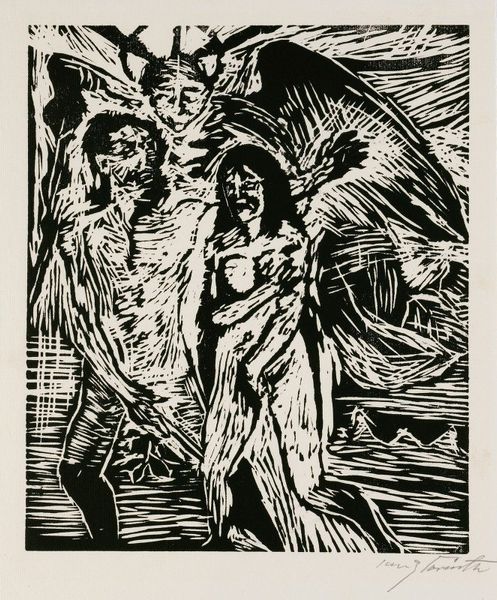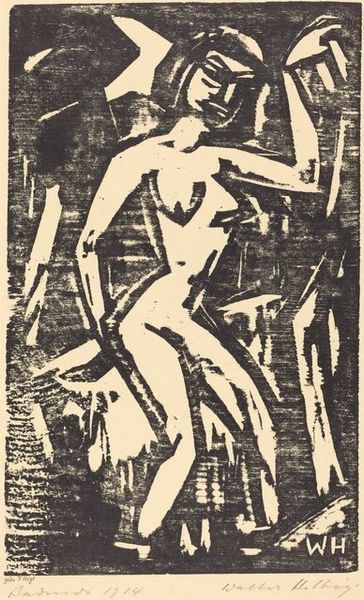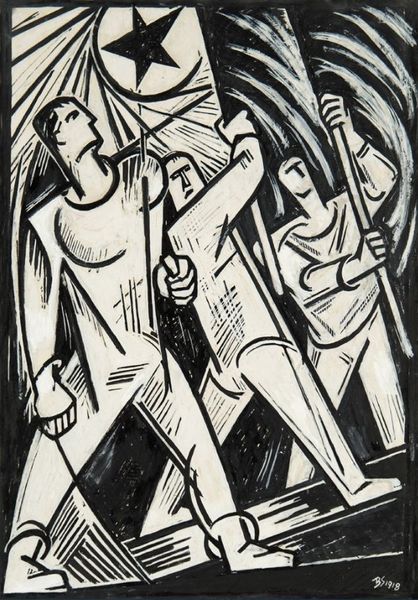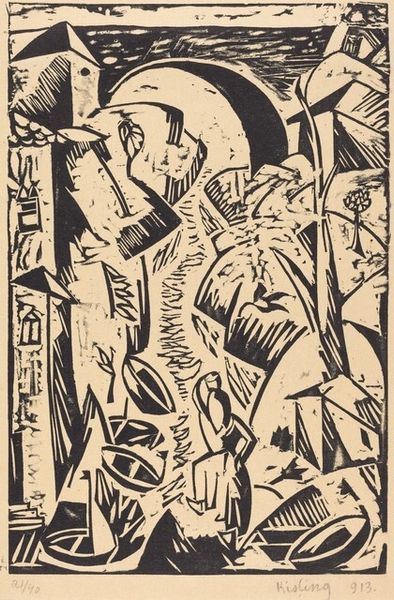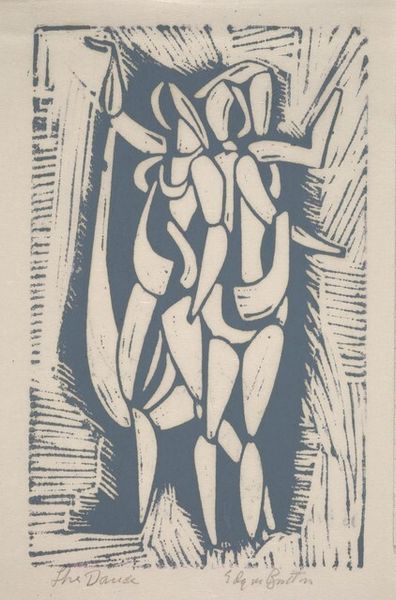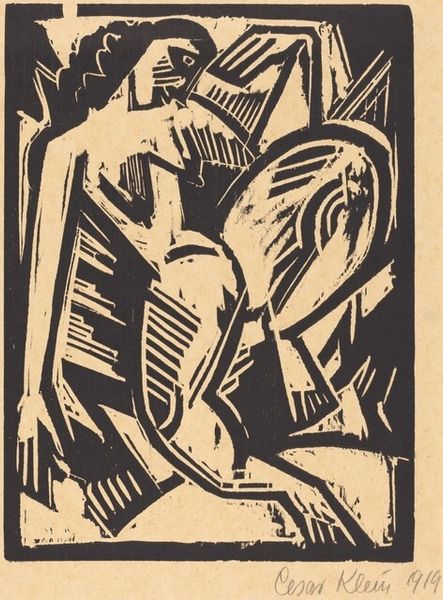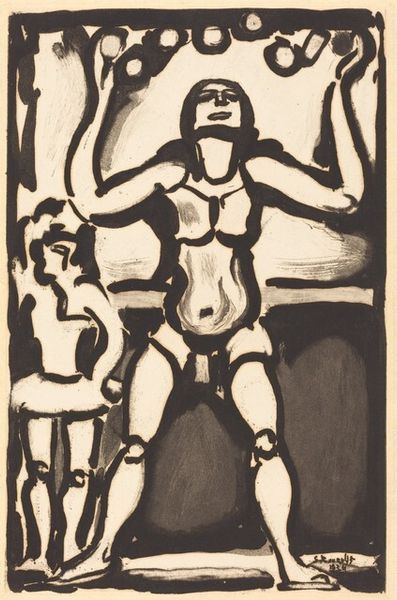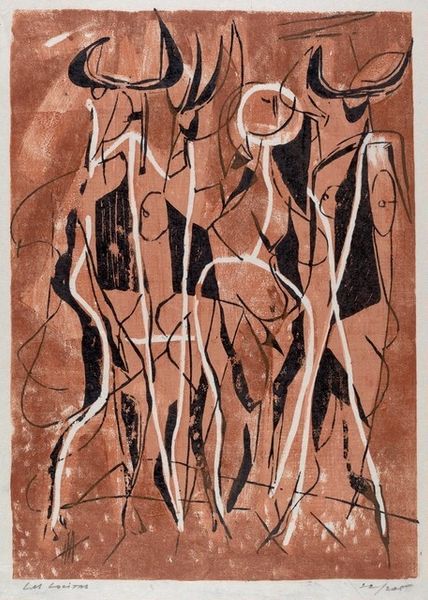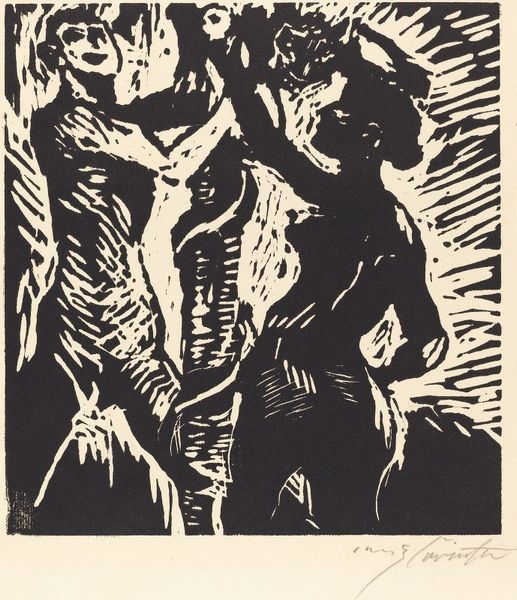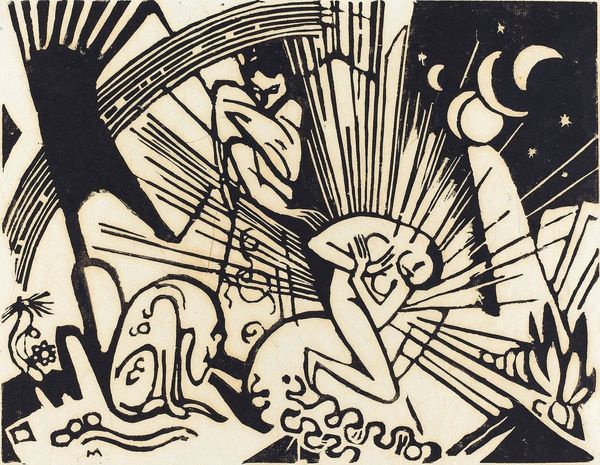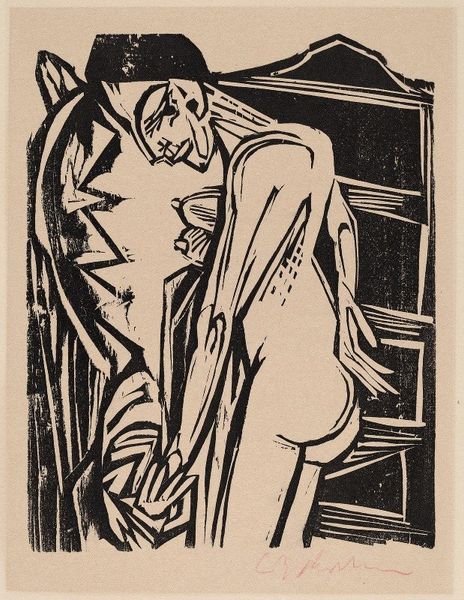
print, woodcut
# print
#
figuration
#
expressionism
#
woodcut
#
line
#
nude
Dimensions: block: 17.9 x 13.5 cm (7 1/16 x 5 5/16 in.) sheet: 25 x 19 cm (9 13/16 x 7 1/2 in.)
Copyright: National Gallery of Art: CC0 1.0
Editor: This woodcut, "Two Figures by the Sea," was created by Erich Heckel in 1920. It’s a stark, almost unsettling image. The angularity and the black and white contrast give it a real edge. What historical or cultural context do you see informing Heckel’s work here? Curator: Well, looking at it from a historical perspective, we can consider the socio-political climate of Germany in the 1920s. After World War I, there was widespread disillusionment and societal upheaval. The Expressionists, like Heckel, responded to this through art that often explored themes of alienation and anxiety. Do you notice anything about the figures' expressions or posture that might support this? Editor: They definitely seem disconnected. The harsh lines contribute to that feeling of unease, like the figures are trapped within the chaos of the world around them, and perhaps within themselves as well. Curator: Exactly. Expressionism was closely tied to challenging the perceived decadence and societal failings that had led to war. Consider the role of art as social commentary here; what messages about societal tension and change might this image project? Editor: I see a strong critique of traditional values, particularly in the representation of the nude figures. It's like Heckel is stripping away the veneer of respectability to expose a more primal, raw truth. Curator: And consider the impact of public exhibition and reception in that era. This image, due to its style and themes, undoubtedly faced challenges in finding acceptance among more conservative elements of society, raising questions about artistic freedom and the boundaries of public morality. What do you take away from examining this piece in its historical context? Editor: Thinking about it in relation to its time, it really highlights how art can both reflect and challenge the dominant values of a society. It has definitely shifted my perspective on the social function of art. Curator: Precisely. And remember that Heckel, by engaging with social and political anxieties of the period, contributed to a wider cultural conversation that continues to resonate today.
Comments
No comments
Be the first to comment and join the conversation on the ultimate creative platform.
